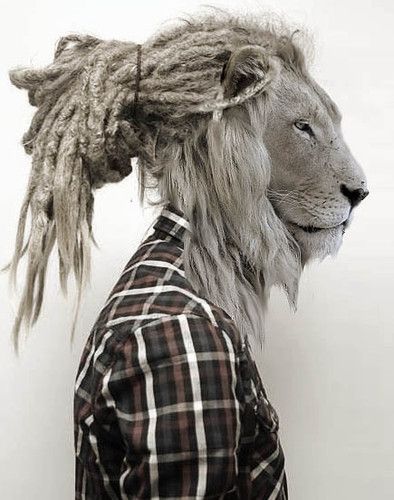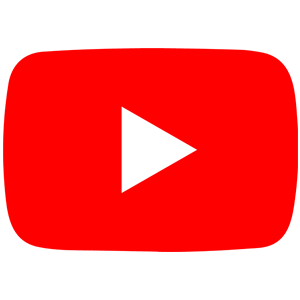Blank Templates for Documentary & Video Production:
- A-Roll Questionnaire for Doc & Video – Blank Template
- Script for Doc & Video – Blank Template
- Shotlist & Schedule for Doc & Video – Blank Template
Select past Etherium Sky projects with reference pre-production paperwork:
(Republic of Molossia Minidoc)
Pre-Production Paperwork:
Key Links:
Pre-Production Paperwork:
Key Links:
Connect with Etherium Sky!
Building Your A-Roll Questionnaire
I’m often asked how I prepare for documentary and non-narrative productions and today I want to share with you a part of my process!
QUICK SUMMARY
In pre-production, I prepare three key documents: an A-Roll question list, a Rough Script and a Shotlist & Schedule. In this article, I’ll focus on my Interview Questionnaire.
Your Interview Questionnaire (or ‘questions list’) is perhaps the easiest of the whole package. I come up with my questions by reverse engineering the story I want/expect to hear from my speakers. When I know what I want the speakers to tell me – it becomes easy to come up with questions. I just swap the statements I expect them to tell me for corresponding questions. I write out questions for each speaker. I highlight the questions I absolutely must ask and I mark the less important ones. The number of questions varies, but I generally adjust it to the amount of time I know I’ll have with the speaker.
And in short – that’s it. If that’s all you need, I wish you best of luck with your shoot! But I’m about to dive much deeper, so if you have a few more minutes, stay with me!
INTERVIEW QUESTIONS
Any documentary project begins with research & story development. Once my MicroNations project was greenlit by the network, I got to work. I watched videos, I read articles, I reached out to my key interviewees and had a small chat. All of that allowed me to have a rough idea of what the final project would be and what my key story within this project would entail.
If you’re a beginner, I would actually encourage you to write it out. Let the text you write be the voice of your speaker. Based on all the knowledge of your story you have write now, write out continuously all that you want your interviewee to say. (don’t worry if you don’t have all the story facts – at this point, this write-up is just a starting-point guide only to be seen by you, only to help you clarify your direction early on).
WATCH ME WORK! 🙂
Sit back, relax, watch and listen – as I work!
Here’s how I go about my own story development!
By this point in my professional life, I often do this write-up in my head, but if you’re a beginner, I’d encourage you not to skip it.
Once you’ve written out your key story – read it back out loud and time yourself. If you’re shooting a 5 minute doc and the story you just timed takes half hour – you might need to condense. But that’s another topic.
For now, let’s say you have your story roughly written out, it’s ideally just a bit longer than your expected video runtime. And it should be just a bit longer – to give you options in post-production. Now, you have to go through your story and for every key statement you wrote, ask yourself: what question should I ask in order for my speaker to provide me this answer?
Go through your write up this way sentence by sentence – and soon enough you should have a pretty good list of questions.
As you go through it – there’s also a good chance additional questions will pop into your mind. Jot them down too.
Once you have a solid list – go through it and ask yourself: can anything be condensed? Are any of those questions unnecessary duplicates? Is there anything key missing? And also – do you have enough? Do you have too much?
There’s no set number of questions you should aim for, or at the least it may be different for each speaker and for each project. But do consider some of those factors:
- How much time will you have with your interviewee?
- Will they be excited to talk to you or is just a necessary chore they must do for their job?
- Will they be seated or standing?
- Will they be in a comfortable setting indoor, or standing out in the mud?
Then put yourself in the shoes of your speaker and ask yourself – what would be reasonable?
This doesn’t necessarily mean that should cut questions out completely. But here’s what I do. I highlight my absolute key questions that I know I must cover. Those are key questions – without them, there is no story. I usually aim for no more than 10 such highlighted questions – but again, it’s relative.
Then – I also mark for myself the low-importance questions. I will ask those – if I have time.
Finally – one other thing I would do before finishing up this document – is organize the questions in a more interview-friendly order. Think about factors such as:
- Will my interviewee be nervous on camera?
- Will I be running out of sunlight?
- Will any of my questions evoke emotional responses in the speaker?
If for any reason you’ll have limited time – be sure to ask your key questions right upfront. But if your interviewee is nervous or first time on camera – give them time. Ask them about their hobbies and favorite food and video games for the first few minutes – even if it has nothing to do with your story. Let them get comfortable.
Here’s what I generally do. I start with a few largely trivial questions – things I don’t even really need. It helps the interviewee settle into it and it gives me a feel for how to proceed. Some people will give great brief answers, right to the point. Others might talk for a half hour about everything – except the one thing you ask them. These first few light questions allow me to get a feel on set, for how to proceed.
From there on, I break my questions down into “story chunks”. In case of Molossia – I knew I want to ask a bunch of stuff about the country. These were one story chunk. Then I wanted to talk about history and culture. That was another story chunk. Then I wanted to dive into the president’s personal backstory. And so on. This helps me stay organized. It helps me structure and focus my interviews. And in turn – it greatly saves me time in post-production.
And there you have it! You should now have your complete list of interview questions for your documentary project. But don’t leave just yet. Let me give you three bonus tips!
BONUS TIP #1
DON’T SHARE YOUR A-ROLL QUESTIONNAIRE WITH INTERVIEWEES
Often times you’ll feel temped to send your question lists to your speakers to let them prepare. Sometimes, they will directly ask you for the list of questions. Different directors have different styles. Some may disagree with me. But my answer is almost always – NO. I almost never send questions to my interviewees beforehand. I only say “almost” because in certain circumstances such as interviews with an important politician, you might have no choice.
Here are few reasons why I never send questions beforehand:
- First off – some speakers will overprepare. They will write out and memorize prepared statements to later recite on camera. This is awful and it completely drains life of any story. And once the speaker has those prepared statements in their head – it’s quite hard to snap them out of it on set.
- Secondly – sometimes I ask a question – but the answer is of secondary importance. What I’m looking for instead – is my speaker’s reaction to hearing the question. In my feature documentary “Love Market”, I interviewed Vietnam’s ethnic minority couples about their love. This is not a topic that’s openly discussed in those communities – and whether shyness, shock or amusement – it was key for me to capture those genuine human reactions. Had I provided my speakers the questions upfront – I would not be able to capture any of those.
- Next – The questions are a guide for me. If you’re less experienced – stick to them. But once you are familiar with the process – being more flexible in your interview allows you to bring much more life into your project. Sometime the speaker will mention an unexpected fact. Instead of continuing down my list – I might suddenly realize that there’s a whole other side to my story here that I wasn’t aware of. And I might opt to suddenly completely change directions during the interview. I then want to segue into it smoothly, rather than have by interviewee caught off guard by something that they didn’t previously see on the list.
- Next – I like to conduct my interviews in a reasonably informal way. I want my interviewees to share their feelings and personal stories with my camera, just like they would with a friend. Imagine meeting a good friend for coffee and handing them a conversation list for what’s too be discussed as you hang out. Turns things awkward, doesn’t it? Same in an interview. If I create a more natural, down to earth atmosphere – my interviewee will provide more meaningful answers.
- And finally… what If I wrote out 50 questions, just because I’m curious and I figure – let’s see how it goes with time. If I send such a list to my interviewee, they’ll get a headache before we even meet. And that’s unnecessary.
However – all this doesn’t mean I refuse to give my speakers any info on what I’ll ask!
In case of Molossia, instead of sending a list of questions, I sent my speaker a rough outline of the topics we’ll discuss (ie. – the ‘story chunks!’). I said I wanted to talk about the culture of Molossia and what defines it. I wanted to talk about the history and geography of Molossia. But I also hoped for the president to share a bit more of his personal life with me. And this was enough for him – while also allowing me to save some ‘mystery’ for the actual interview!
BONUS TIP #2
THROW IN A FEW ODDBALL QUESTIONS!
Depending on your project, it may be a good idea to throw in some oddball questions into your list! Ask your speaker what their favorite animal is! Ask them to tell you a dirty joke! Or ask them what sound a an angry elephant makes! Ideally – have your oddball questions relate to your project. You might not ask them at all – but having them on your list for backup can help you break up tension if your speaker is too nervous. Also – they can often help you capture a reaction. And maybe all you need in your edit at a certain point will be just a big smile or your speaker blushing!
BONUS TIP #3
PARAPHRASE SPEAKER’S ANSWERS TO HELP THEM FOCUS
During your interview, some people will give you fantastic and direct answers, making your life simple. Others – will not be able to answer a single question, giving you a long winded monologue instead. Some people are too nervous, others simply have a hard time with focused conversations as a person. Some people understand what you’re doing and how to help you well and others (somewhat mistakenly) think talking more helps you.
Here’s a tip I learned working on American Idol years ago. It’s something we did when we had hundreds of people each day, many of them highly emotional and not able to clearly focus, speak concisely or always to the point.
When given an overly long-winded answer – paraphrase the statement the speaker gave you back to them – in your own, condensed, simple words and ask them if this is what they meant and if you understood correctly. If they confirm (which they will as long as you listened well and didn’t twist their words) – ask them to repeat the very short sentence you had just given them back to you.
Hopefully they’ll do just that and if so – voila! With this little on-set trick you may have just saved yourself a few hours of cutting individual words into a sensical sentence in post production later.
This is not a golden bullet and you don’t want to overuse it – but it has saved me countless times before.
Need More Practice?
Watch me complete my own A-Roll Questionnaire for an upcoming NBC mini-doc about foxes!
WRAP UP
And that’s it! I hope you found some of this advice helpful! Aside from this blog entry, I encourage you to watch my pre-production videos, as they’re more hands-on and go into more detail on the process.
And don’t forget – you’re not all done just yet! Before you wrap up your pre-production, you still need to complete your SCRIPT as well as your SHOTLIST AND SCHEDULE! But don’t worry, I got you covered. Below you’ll find links to videos and articles where I guide you through those by hand, step by step!
See you there!






